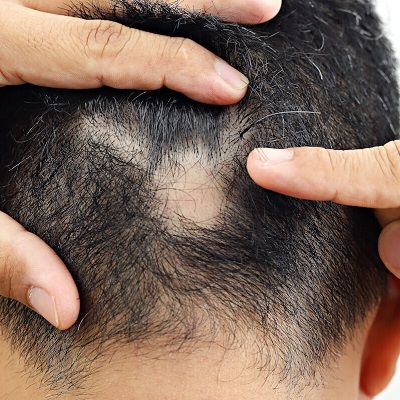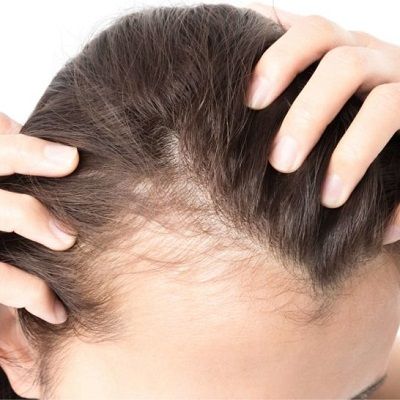Androgenetic alopecia, commonly known as male or female pattern baldness, is a prevalent form of hair loss affecting millions worldwide. This condition is characterized by a gradual thinning of hair, typically beginning at the temples or crown. For individuals experiencing this issue, especially in Oman, exploring various Hair Loss Treatment in Oman options is crucial to regain confidence and manage the effects of hair loss. In this article, we will delve into the causes, symptoms, and effective treatment options available for androgenetic alopecia.

What is Androgenetic Alopecia?
Androgenetic alopecia is a genetic condition influenced by hormones, particularly androgens, which are male hormones that play a role in hair growth. Both men and women can experience this type of hair loss, though the patterns differ. In men, hair loss usually manifests as a receding hairline and thinning at the crown, while women often see overall thinning without a receding hairline.
Causes of Androgenetic Alopecia
The primary cause of androgenetic alopecia is hereditary predisposition. If family members have experienced hair loss, the likelihood of developing this condition increases. Hormonal changes, particularly in testosterone and its derivative dihydrotestosterone (DHT), also significantly contribute to hair follicle miniaturization and eventual hair loss.
Symptoms of Androgenetic Alopecia
Symptoms can vary between genders but typically include:
- Gradual thinning on top of the head
- Receding hairline
- Bald spots
- Overall hair thinning
Recognizing these symptoms early can facilitate timely intervention and increase the effectiveness of treatment options available in Oman.
Treatment Options for Androgenetic Alopecia
When considering hair loss treatment in Oman, several effective options are available. Here’s a closer look at each:
1. Medications
Minoxidil
Minoxidil, available over-the-counter, is a topical solution applied directly to the scalp. It works by increasing blood flow to hair follicles, promoting hair growth and slowing hair loss. Minoxidil is suitable for both men and women and is often one of the first recommendations for those experiencing hair thinning.
Finasteride
Finasteride is a prescription oral medication primarily for men. It functions by inhibiting the conversion of testosterone to DHT, helping to prevent further hair loss. While effective, it may have side effects, so consulting a healthcare provider before starting treatment is crucial.
2. Hair Transplant Surgery
For those seeking a more permanent solution, hair transplant surgery may be an option. This procedure involves taking hair follicles from areas of the scalp with healthy hair and transplanting them to thinning or bald areas. Various techniques, such as Follicular Unit Transplantation (FUT) and Follicular Unit Extraction (FUE), can be tailored to individual needs and preferences.
3. Low-Level Laser Therapy (LLLT)
LLLT is a non-invasive treatment option that uses laser light to stimulate hair growth. The process involves exposing the scalp to low-level lasers, which are believed to improve circulation and cellular metabolism in hair follicles. This method is gaining popularity as a complement to other treatments.
4. Platelet-Rich Plasma (PRP) Therapy
PRP therapy is an innovative treatment where a patient’s blood is drawn, processed to extract plasma rich in growth factors, and injected back into the scalp. This approach aims to promote healing and stimulate hair follicles, potentially reversing hair thinning. PRP therapy has garnered attention for its natural approach to hair restoration.
Lifestyle Changes to Support Hair Health
In addition to medical treatments, lifestyle changes can play a significant role in managing androgenetic alopecia. These changes can complement hair loss treatment in Oman:
Diet
A balanced diet rich in vitamins and minerals can promote healthier hair growth. Key nutrients include:
- Biotin: Supports hair strength and growth.
- Zinc: Aids in hair tissue growth and repair.
- Omega-3 Fatty Acids: Nourish hair follicles.
Stress Management
Chronic stress can exacerbate hair loss. Incorporating stress management techniques such as yoga, meditation, and regular exercise can help maintain overall hair health.
Seeking Professional Guidance
For individuals dealing with androgenetic alopecia, consulting a dermatologist or a specialist in hair restoration is essential. They can provide personalized assessments, recommend appropriate hair loss treatment in Oman, and develop tailored treatment plans based on individual needs and conditions.
Conclusion
Understanding androgenetic alopecia and its treatment options is vital for anyone experiencing hair loss. Whether exploring medications, surgical options, or lifestyle changes, several paths can lead to improved hair health and restored confidence. By staying informed and seeking professional advice, individuals can take proactive steps toward addressing their hair loss and achieving their desired results.
